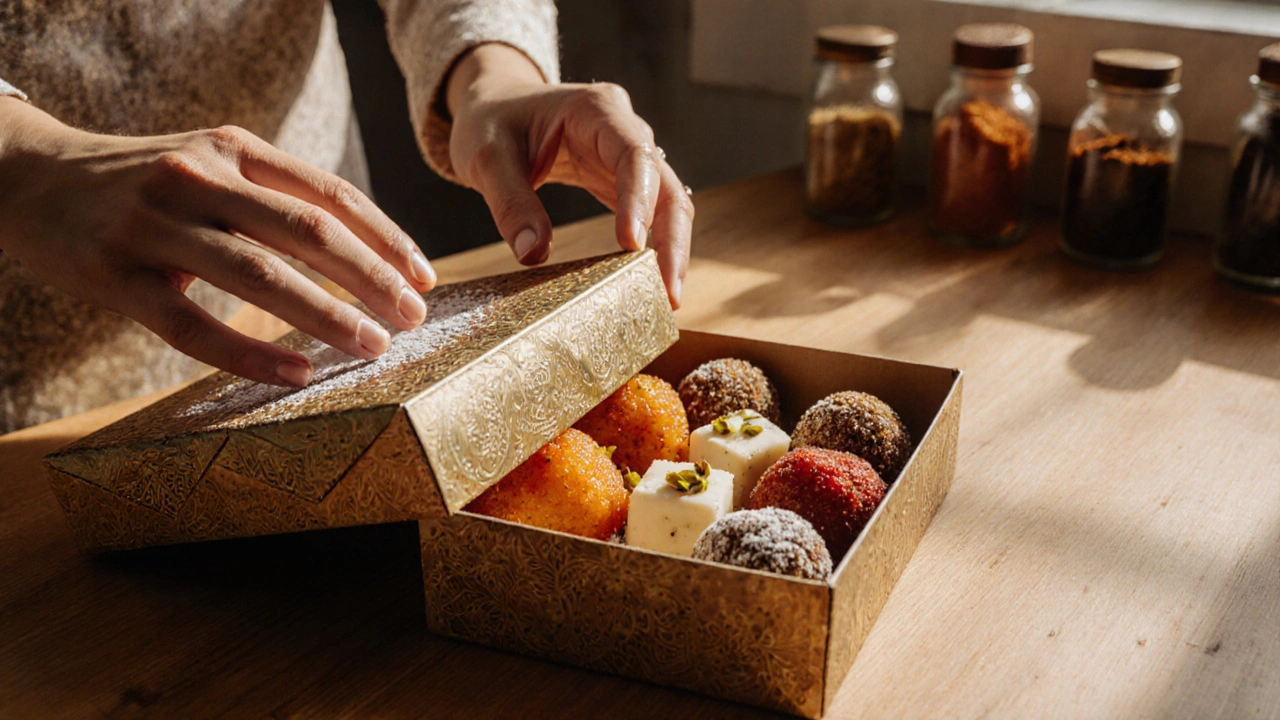Storing Indian Sweets: Expert Tips to Keep Mithai Fresh
When working with storing Indian sweets, the art of keeping traditional desserts like laddus, jalebis, and pedas fresh, flavorful, and safe. Also known as sweet preservation, it relies on understanding how sugar, moisture, and temperature interact. In the same breath, Indian sweets, a broad category of desserts made from milk, sugar, nuts, and spices each have their own shelf‑life quirks. The right refrigeration, cool storage at 4‑8 °C that slows bacterial growth or lack thereof can make or break the texture. Finally, packaging, the use of airtight containers, wax paper, or vacuum seals to lock out air and humidity is the missing link that ties flavor preservation to convenience.
Key Factors for Sweet Preservation
Storing Indian sweets isn’t a one‑size‑fits‑all job. Dry mithai such as besan laddu or rava ladoo thrive in a cool, dry pantry when kept in a sealed jar; humidity above 60 % will turn them soggy. Moist sweets like jalebi or gulab jamun need a different approach—refrigerate them in a shallow dish covered with a damp cloth to keep the syrup from crystallising. If you plan to keep sweets for more than a week, the freezer becomes your ally: most sugar‑based desserts freeze well, but you must wrap them tightly in cling film and then place them in a freezer‑safe container to avoid freezer burn. Natural preservatives—ghee, cardamom oil, or a splash of rose water—extend shelf life by creating a moisture barrier and adding antimicrobial properties. Finally, label every container with the date you prepared the sweet; this simple habit prevents accidental overruns and helps you track which desserts need to be consumed first.
Beyond the technical bits, the cultural side matters too. During festivals like Diwali or Raksha Bandhan, families often prepare large batches of sweets to share with relatives. Proper packaging ensures that gifts travel without breaking, and the right storage method guarantees that the taste you intended today will still shine at the next family gathering. Different sweets respond uniquely to climate: in hot, humid regions, refrigerated storage is a must for anything with a syrup base, while in cooler northern climates, a simple airtight tin can keep dry sweets crisp for weeks. By matching each mithai to its ideal storage environment—pantry, fridge, or freezer—you preserve not just flavor, but tradition. Below you’ll find a curated list of articles that dive deeper into specific storage tricks, variations for regional sweets, and quick fixes when a sweet goes off track.
Do Indian Sweets Go Bad? Shelf Life, Storage & Spoilage Guide
Learn how long different Indian sweets last, proper storage methods, and signs of spoilage so you can enjoy fresh mithai safely.
